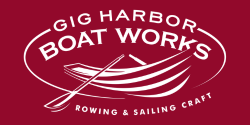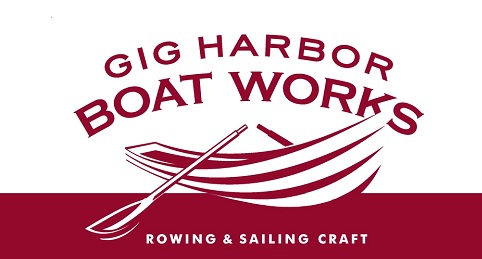We’re all about building the right boat for the right person.
If you ask 100 different people what they want out of a boat, you get 100 different answers. Rather than try to be everything to everybody, we focus on what we do well – building fiberglass rowing and sailing boats inspired by classic, heritage designs because they offer timeless appeal combined with modern convenience.
We’ve never been a cookie-cutter kind of company; since we build boats by hand, we’d rather focus on building boats tailored to the way people envision using them out in the real world. Here’s a little view into why we do what we do.
Rowing and sailing creates positive, formative childhood experiences.

Most people who come to love rowing and sailing are first exposed to the activity as children. Who else among us remembers countless hours spent as kids, “simply messing about in boats?” We learned to row and sail, we learned water safety, we learned independence, we learned teamwork. We learned to trust in our own capabilities as we explored the world around us and made our own adventures. But more than that, we just plain had FUN. No screens, no phones, no nothin’.
Yet for today’s kids and young families, often those rowboats that were so fun to use are out of reach. Nowadays, even for those kids lucky enough to attend summer camp, most are introduced to rowing in modern motor-oriented boats which were never designed for rowing. The not-so-happy camper will spend an afternoon struggling to move an unresponsive box of a boat using heavy, clumsy oars and will soon reach the lifelong decision that rowing is inefficient and not fun. We’d rather see kids out there making great summer memories in boats that are designed to row and sail well.
When it comes to rowing, the truth is…
The best-performing rowboats were designed hundreds of years ago.
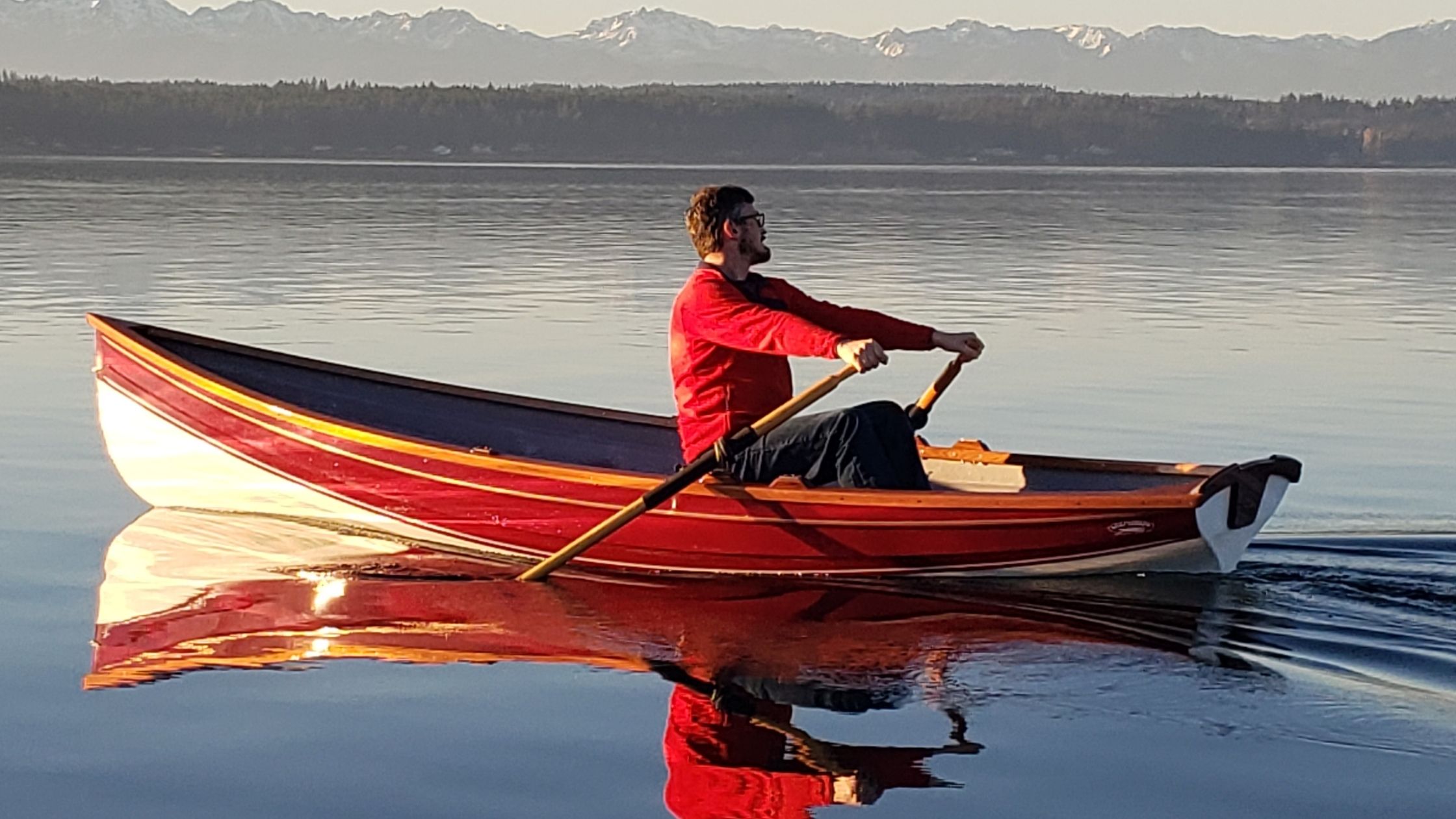
The shape of true rowing craft evolved from centuries of experience and experimentation by people who used rowboats to earn their living. This process culminated in the mid 1850’s with remarkably efficient boats like the 14′ Whitehall. In calm water a Whitehall will glide over 100 yards between strokes and can maintain a very efficient speed using only 4-8 strokes per minute.
These boats were not created on a computer program and lofted on a laser printer, but are the end product of trial and error by generations of master craftsmen. Even the most modern computer-generated 12 meter racing boats have numerous design changes after they are built and analyzed in the water.
There are numerous variations of rowing craft, each best suited for a specific task. However, a common characteristic linking all good rowing boats are a fine entry, flowing lines, and a narrow or raised transom so water can flow past the hull with a minimum of friction and turbulence. The shape between the bow and stern may be long and lean to make a fast water taxi, or full bodied with high freeboard to make a seaworthy fishing boat with high carrying capacity.
Versatile small craft designs let you row, sail, and motor — all in one boat.
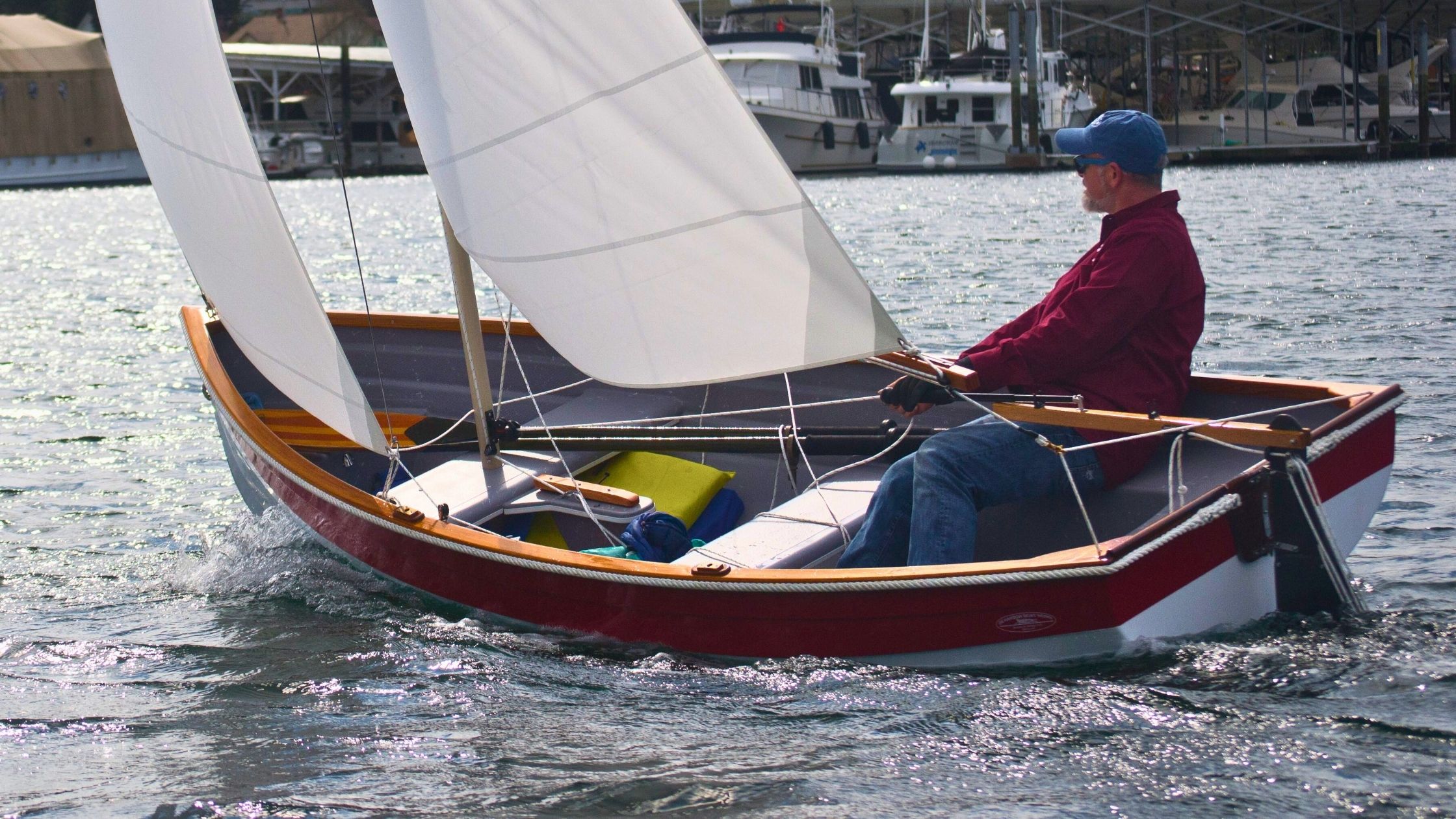
Some of the most important considerations in the design of a small boat are versatility and simplicity. Most boats are designed for only one purpose. They are usually designed exclusively for sailing, fishing, or rowing, but rarely a combination. In all of our designs we strive to attain maximum versatility, simplicity, and efficiency. They’re versatile in that they may be rowed, towed, stowed, and sailed. Also, small motors may be used. Our sailing dinghies are quick to rig and easy to learn. Because of their proven designs and light weight, they are the most efficient small boats available.
Our 12′ Point Defiance model is a good example of an evolution of boat design which will both row and sail very well. It’s a great rowboat that also works well as a first sailboat to learn on. It has very full lines aft so that even though it does not have a broad transom at the waterline, it can support a reasonable size outboard motor. As no true rowing boat will plane there is no point to attempt to use a large motor. Traditional rowing craft will attain “hull speed” (as fast as the laws of physics will allow them to move through the water) with one person rowing, and the average human generates less than one fourth horse power.
Given similar hull shapes, a longer rowing boat will always perform better than a shorter boat. Minimum size for a boat with good “carry”, or distance it will glide between strokes, is about ten feet. However, a boat only two to four feet longer will have remarkably increased “carry”, increased ability to punch through waves without being stopped, more weight carrying capacity, and increased general seaworthiness.
Stability is also directly affected by hull shape and size. A flat bottom boat will have more initial stability than a round bottom boat, but a round bottom boat of the same size and beam will have more ultimate stability. In calm water the flat bottom boat will seem more stable, and a round bottom boat of the same dimensions may seen somewhat ‘tippy’ by comparison.
Take the same two boats into rougher water, and the round bottom boat will be less sensitive to wave action. The flat bottom boat will pitch and roll, pound in the waves, and when it reaches the point of instability will capsize with no warning. In the same conditions the round bottom boat will be less affected by wave action and will actually increase its resistance to lean as the side of the boat is submerged deeper in the water. An old-time working fisherman would never consider taking a flat bottom, slab sided boat into rough water.
We’ve found our niche in building adventure-worthy small craft.
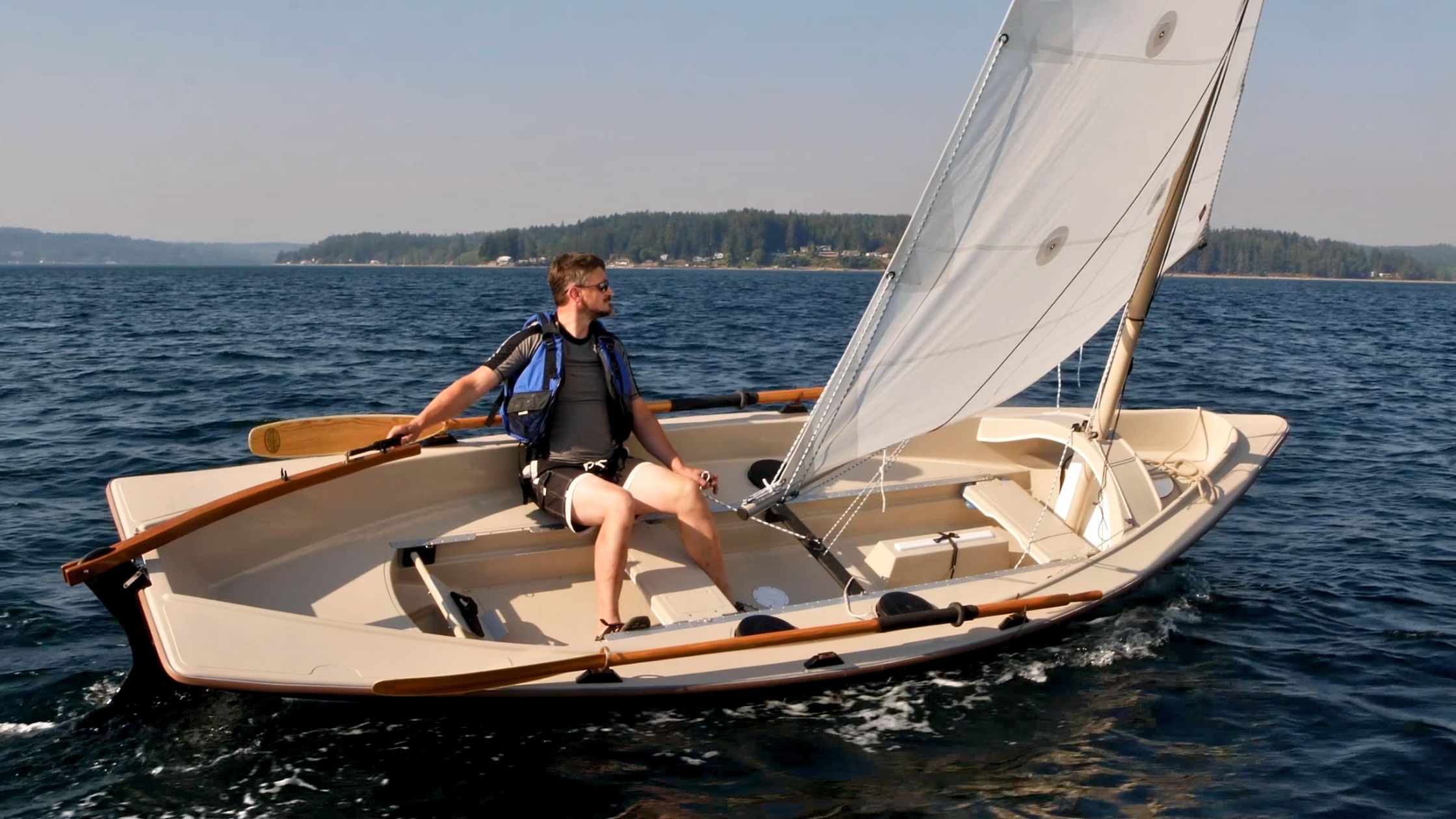
Back in the olden days when we were first getting started building boats, we were focused on small yacht tenders. But over the years as our boats built a reputation for practical usability, people came to us seeking more adventure-worthy small craft that could be standalone vessels in their own right. That’s what led us to create our trio of rowing and sailing skiffs: the 17′ Jersey Skiff, 16′ Melonseed, and 17′ Salish Voyager. All three use the same versatile hull shape, and are equipped with our famous sliding rowing seats. Yet each design offers different sail rigs and interior layouts to cater to different kinds of boaters.
Our one-of-a-kind sliding rowing seat design keeps the floor clear so you can still bring along fishing gear, dry bags, or whatever you need for the journey without tangling things up. The design and roller bearings we use in our sliding seat rowboats are the very same as those we’ve put in world-record setting ocean rowboats, so you know they will hold up to the rigors of everyday use!
For those of you who want to take your small craft adventuring to the next level, you’ll even find self-bailing floors built into the Salish Voyager and 12′ Scamp for seaworthiness and self-rescue capsize recovery capabilities.
Of course, we still commonly have customers who come to us looking for a tender for their yacht. Initially, they usually want the smallest one they can get, but after trying several models on the water the vast majority of the time they will purchase the largest boat they can comfortably handle. When asked the reason for their choice, they usually say something like “We’re more comfortable in it” or “it just feels better”. We find that people come back all the time to “trade up” their tender for a bigger one, but seldom for a smaller one!
There are advantages of building one boat at a time.
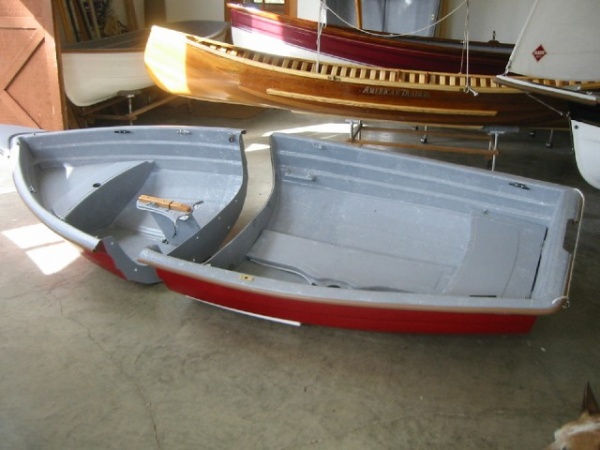
You could call us a “bespoke” boatbuilder. From our fleet of 10 different models, we tailor each boat to the needs of the individual customer. Above is just one example, a custom nesting 10′ Navigator made for a customer who didn’t have much room on deck to store their tender. Try finding that from your big-box marine chandlery!
The most important consideration is the attention to detail in the way the designer considers customers’ needs, and puts them above manufacturing preferences such as taking shortcuts that may speed production. For example, the daggerboard trunk in all our boats is angled toward the stern and not vertical as is done by other companies. Although it is more difficult to build, the angled centerboard trunk is more superior in design because it is less likely to scoop into the boat. Also, virtually all our competitors use painted plywood for their rudders, but we use a very high tech (and expensive) carbon reinforced composite for both rudders and daggerboards. It is heavy and requires that we shape it with carbide tools, but in use it will never warp or need painting.
Our business is 100% traditional rowing & sailing small craft.
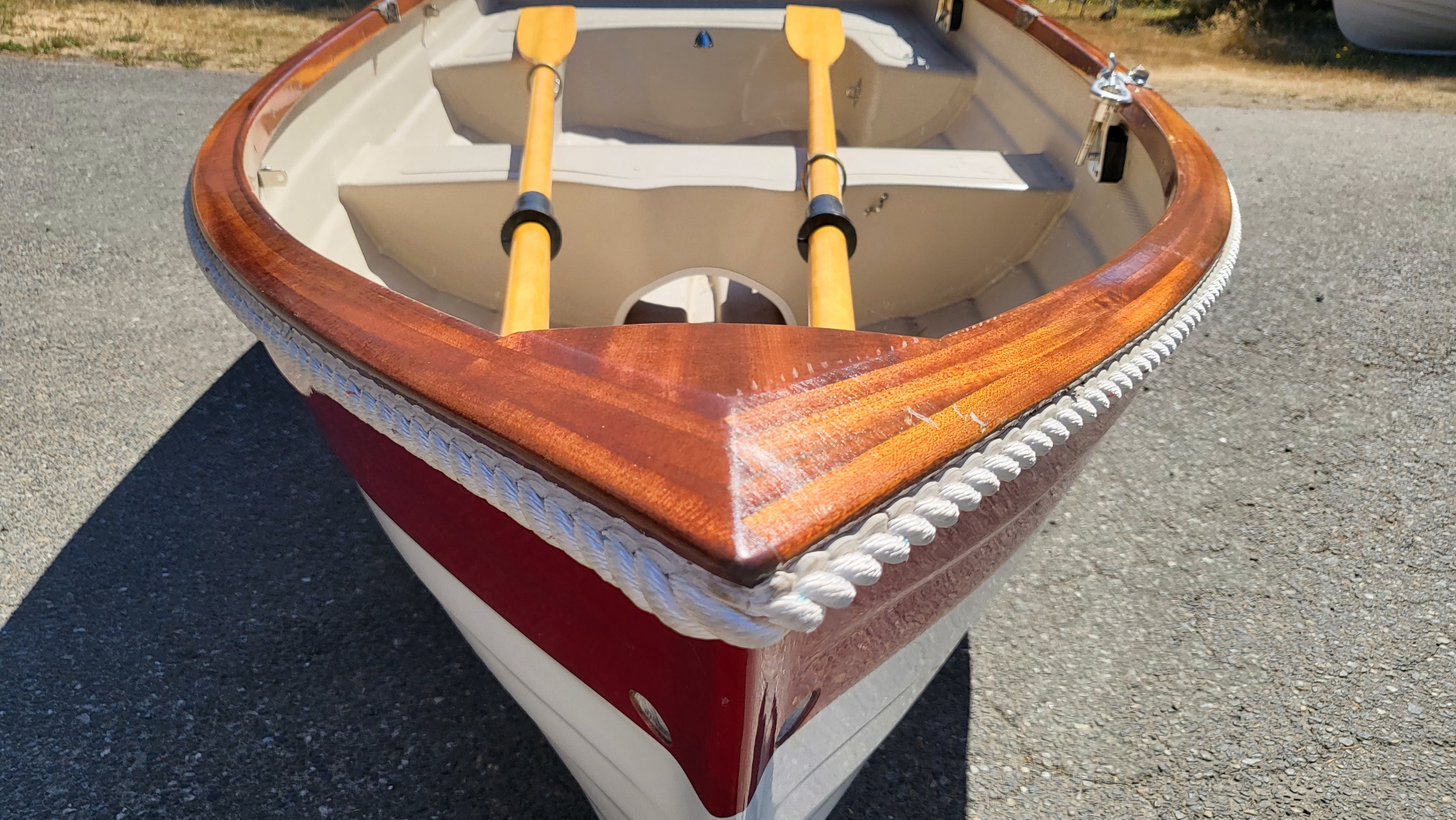
While some of our competitors make inflatables or paddleboards or racing sculls, we focus our entire business on recreational rowing and sailing boats. We don’t overly concern ourselves with what’s “trending” this year — we focus on making timeless small craft from tried and true designs and colors that you’ll love just as much ten or twenty years from now as you do today. We actually use our boats, and are always looking for ways to make them better. Small craft are all we build, and as we usually have a substantial backlog, we have to make them good enough to be worth waiting for. When you compare you will find that our prices are very competitive with the mass produced boats because you are buying direct from the builder.
We cherish our reputation as builders of fine quality rowing and sailing craft, and take pleasure in receiving orders, sight unseen, from places as diverse as Hilo, Hawaii to Saskatoon or Alberquerque. Be assured that when you order a boat from us you will receive personal attention and the best boat you can get.
